- Seller: David C
- Location: Seattle, Washington
- Mileage: 95,000 Shown
- Chassis #: F1OCOR31565
- Title Status: Clean
This 1960 Ford F100 Styleside is one of the last third-generation F100s built. It was optioned with the 292 cui V8 and 4-wheel drive. While the F150 gets all the attention these days, it was the F100 that kicked things off for the F-Series. The seller has owned this truck since 1978, but they have decided it’s time to let someone new enjoy this rare 4×4. It’s being offered here as a Barn Finds Auction, so take a look and cast your bids below.
The seller admits the truck isn’t in perfect shape. It has some rust issues in the usual places, but the frame is sound. They have done a lot of work to it recently, including installing a new carburetor, fuel tank, battery, and fresh fluids. It has also recently had its entire brake system serviced professionally. At some point in the truck’s life, air horns were added, and the seller noted that they could rebuild it.
The Y-block 292 V8, rated at 146 horsepower, was the most powerful option offered in the 1960 F100. It’s mounted to a 3-speed column-shift manual transmission with a floor-shift transfer case. This setup wasn’t built for top speed but rather for getting work done. Until 1959, Ford didn’t offer their own factory-built 4×4 system on the F100, instead using components built by Marmon-Herrigton. The seller notes that the engine could use a tune-up to run its best, but everything works.
Ford opted to conceal the running boards behind the F100’s doors. This gave the truck a sleeker look while allowing easy access into the cab. It’s a small change, but one that has had a huge impact on truck styling. A closer look inside this truck reveals what appears to be an original interior. The bench seat is wearing the ever-popular saddle blanket style cover. The dash is complete and features all of its original gauges and controls. Some rust spots in the floor will need to be patched, but the metal to do so is readily available. Every nut and bolt needed to restore this truck to like new condition is available and reasonably priced.
This truck’s next owner will have many options for what they do with it. They could tune it up and drive it as is, restore it completely, or even build it into a heavy-duty off-roader. At the end of the day, what’s important is that it continues to be enjoyed! So, what route will you take with this rare 4×4? Let us know in the comments, and if you have any questions for the seller, leave them there as well!



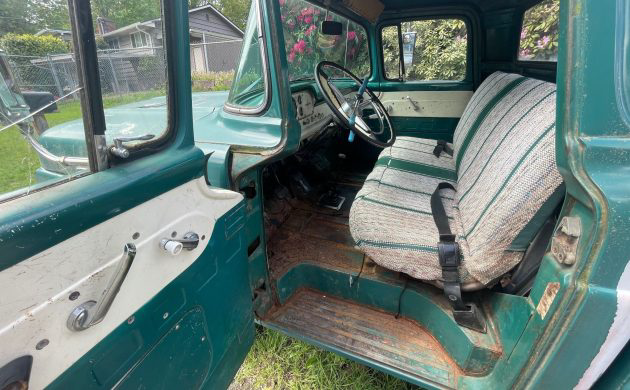



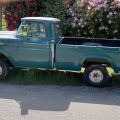


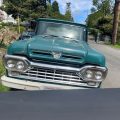
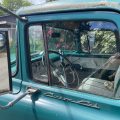
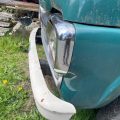

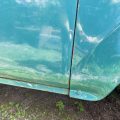

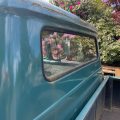

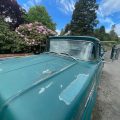

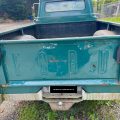
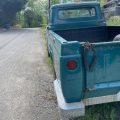
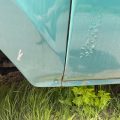

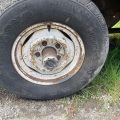
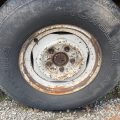
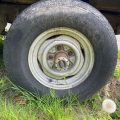
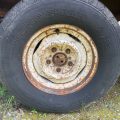

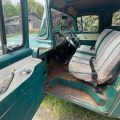


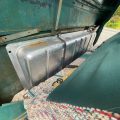
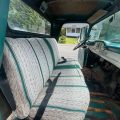
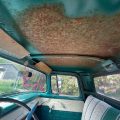
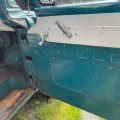
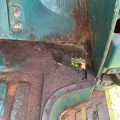

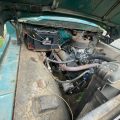

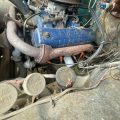













Only 146 horsepower? Quite a drop from the 185 hp cars were rated that year. Ford still used that bed on the heavy duty trucks for 1961 to 63 and on the later F100s to correct their “unibody ” mistake.
Why such a diffrence in the gap between the rear wheels and the wheel well openings. Just do not look right
The long wheel base 100 and 250’s of the day had a shorter CA (cab to axle) in those days for all GM n Mopar included. When the longer wheelbase was adopted the utility body mfg’s used a rear fender panel that could be used for both wheel bases. Basicly if panel used short on left side, was used on the right side, it would move the wheel arch rearward for the longer CA.
I may have misunderstood your question as far as wheel well gap. Remember this is a Four Wheel Drive truck. The front axel being bolted to the 2 wheel drive front springs raised the chassis much higher and to level the truck off they put spacer blocks between the rear axel and springs, thus giving you the big clearances in the wheel well. Ford did not make a lower appearing 4X4 until 1979
Morley Brown, looks normal to me, that’s how they built 4×4’s back then.
Nothing wrong with a lot of ground clearance, unless you need to carry a step ladder to get in and out of the truck.
Nice the original High Boy
V8, 4×4, and Custom Cab. (Stainless grill and trim around windows, plus nicer instrument cluster) Nice!
4 speed with granny would have been a worthwhile option.
Am I looking at two single master cylinders as opposed to a “dual pot”?
Bub, I think one of those cylinders is
for the hydraulic clutch that was used
on these trucks in ’60. Only Ford and Datsun offered a juice clutch that year. A friend of mine had one of these that was built for the Air Force.
His truck had the cowl lights on the
cab too. Nice truck.
anyone knows the payload of this F100 4×4 ?
… asking because of use a 60th slide in camper :-)
Checked a few sites. Light weight 3050#, Gross, GVW is 5000.08# This is 1960 F-100, no separation between 2 wheel drive and 4X4.
To bidders and lookers all…
– this truck does have a hydraulic clutch
– there is an extra spring leaf at the rear
– one reason the gap over the rear wheels seems wide is that the truck had 17″ split rim wheels when I bought it; perhaps they were original – the current wheels are 15″. I do not have the originals.
– also uses an electric fuel pump – much more efficient than the mechanical
Saying this truck has rust is like saying the Pacific Ocean has water. Of course it has rust. It’s in the Pacific Northwest and it’s nearly 65 years old. I have rust for that matter. The truck is still solid, whereas a lot of new trucks would have dissolved. Anyway, if that 292 won’t respond to new plugs, points and condenser and it has good even compression, replace the timing chain. They tend to stretch over time on those engines. It’s not a big job either, and it’ll bring ‘er back to life!.
In addition Terry’s Comment, this engine MAY have Fords, Load-O-Matic distributor. It would only have vacuum spark advance, No centrifugal/mechanical timing advance. If a poor performance situation exists(ed) a check with a timing light to see if advance is working needs to be done. Also Load-O-Matic needed a matching carb to function properly. That carb, in MY Estimation, would supply both Ported and Manifold Vacuum depending on Throttle Position and the Load on the engine. If there is a replacement carb, it should be of the Correct type. Ford used this from1949 on, on Various engines.
The reserve is off!
The F series started in 1948 with F-1, second in 1953 with F-100, third in 1957 thru 1960, fourth 1961 thru 1966. I had a 1953 panel delivery for about 30 years, sold it four years ago for the 1966 F-100. It’s a less bouncy ride with the twin I beam front suspension. Mine has a Mustang 302 and AOD trans, trutrac rear, in before I bought it. Even the lower 2-wheel drive truck has a lot of space with 15″ wheels.
The bid increment has been lowered.